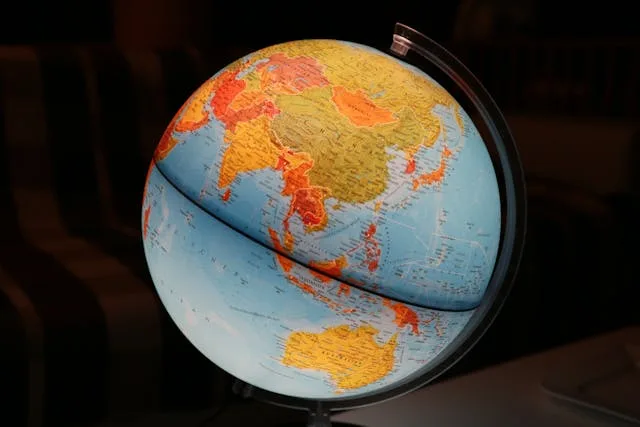Earth Day, observed annually on April 22nd, serves as a global reminder of the importance of environmental conservation and sustainability. First celebrated in 1970, Earth Day has since grown into a worldwide movement, mobilizing millions of people to take action against environmental degradation and promote a healthier, more sustainable planet. This article delves into the significance of Earth Day, its history, key initiatives, and the ongoing challenges and opportunities in the realm of environmental protection and conservation.
Thank you for reading this post, don't forget to subscribe!
History of Earth Day
The inception of Earth Day can be traced back to the environmental movement of the 1960s, a time marked by growing concerns over pollution, wildlife extinction, and the degradation of natural resources. Senator Gaylord Nelson, inspired by the student anti-war movement, envisioned a day dedicated to raising awareness about environmental issues and advocating for meaningful change.
On April 22, 1970, the first Earth Day was celebrated in the United States, drawing an estimated 20 million Americans to rallies, demonstrations, and educational events across the nation. This historic event spurred the passage of key environmental legislation, including the Clean Air Act, the Clean Water Act, and the establishment of the Environmental Protection Agency (EPA).

Global Impact and Significance
Since its inception, Earth Day has transcended national borders, becoming a global phenomenon celebrated in nearly 200 countries. It serves as a catalyst for environmental action, inspiring individuals, communities, and governments to address pressing ecological challenges such as climate change, deforestation, loss of biodiversity, and pollution.
Each year, Earth Day focuses on a specific theme or issue, ranging from renewable energy and conservation to sustainable consumption and environmental justice. By raising awareness and fostering dialogue, Earth Day encourages collective action to protect the planet and secure a sustainable future for generations to come.
Key Initiatives and Activities

Earth Day is marked by a wide array of activities and initiatives aimed at promoting environmental stewardship and sustainability. These include:
- Clean-up Campaigns: Volunteer-led efforts to clean up beaches, parks, and other natural habitats, removing litter and restoring ecosystems.
- Tree Planting Campaigns: Planting trees helps mitigate climate change, combat deforestation, and restore degraded landscapes. Many organizations and communities organize tree-planting events on Earth Day.
- Education and Awareness Programs: Schools, universities, and environmental organizations host workshops, seminars, and educational campaigns to raise awareness about environmental issues and promote eco-friendly practices.
- Policy Advocacy: Earth Day serves as an opportunity to advocate for stronger environmental policies at the local, national, and international levels, urging governments to take decisive action to address climate change and protect natural resources.
- Community Events: Festivals, fairs, and community gatherings provide opportunities for people to come together, celebrate nature, and explore sustainable living practices.
- Digital Activism: In recent years, digital platforms have played an increasingly important role in Earth Day activities, with online campaigns, social media hashtags, and virtual events reaching millions of people around the globe.
Challenges and Opportunities
Despite decades of environmental activism and progress, the planet still faces formidable challenges, including:

- Climate Change: Rising global temperatures, extreme weather events, and melting ice caps pose significant threats to ecosystems, communities, and economies worldwide.
- Biodiversity Loss: Habitat destruction, pollution, and overexploitation of natural resources continue to drive species extinction at an alarming rate, jeopardizing the stability of ecosystems and the services they provide.
- Pollution: Air, water, and soil pollution remain pervasive problems, impacting human health, wildlife, and the environment. Plastic pollution, in particular, has emerged as a major concern, with millions of tons of plastic waste entering oceans and waterways each year.
- Resource Depletion: The unsustainable consumption of resources, including fossil fuels, minerals, and freshwater, depletes natural reserves and accelerates environmental degradation.
However, amidst these challenges lie opportunities for positive change:
- Renewable Energy: The rapid growth of renewable energy sources such as solar, wind, and hydropower offers a pathway to reduce greenhouse gas emissions and transition to a low-carbon economy.
- Conservation and Restoration: Efforts to conserve and restore natural habitats, including forests, wetlands, and coral reefs, can help protect biodiversity and enhance ecosystem resilience.
- Circular Economy: Transitioning to a circular economy, where resources are reused, recycled, and repurposed, can minimize waste and reduce environmental impact.
- Green Technology: Advances in technology, such as electric vehicles, energy-efficient appliances, and sustainable agriculture practices, offer innovative solutions to environmental challenges.
The Role of Individuals and Communities
While governments, businesses, and organizations play crucial roles in addressing environmental issues, individuals and communities also have the power to effect change. By making sustainable choices in their daily lives, people can collectively make a significant impact:
- Reduce, Reuse, Recycle: Practicing the three Rs—reduce, reuse, recycle—helps minimize waste and conserve resources. This includes reducing single-use plastics, choosing products with minimal packaging, and recycling materials whenever possible.
- Conserve Energy: Simple actions such as turning off lights, unplugging electronics, and using energy-efficient appliances can lower energy consumption and reduce carbon emissions.
- Support Sustainable Practices: Whether it’s buying locally sourced produce, supporting eco-friendly businesses, or advocating for sustainable policies, individuals can use their purchasing power and influence to promote sustainability.
- Get Involved: Joining environmental organizations, participating in community clean-up efforts, and engaging in advocacy campaigns are all ways to contribute to the collective effort to protect the planet.
Conclusion
Earth Day serves as a powerful reminder of our interconnectedness with the natural world and our shared responsibility to safeguard it for future generations. By celebrating Earth Day and taking action throughout the year, we can work towards a more sustainable and resilient planet. From individual actions to global initiatives, every effort counts in the ongoing quest to protect and preserve the Earth for all living beings. As we celebrate Earth Day, let us renew our commitment to environmental stewardship and strive for a healthier, more sustainable world.